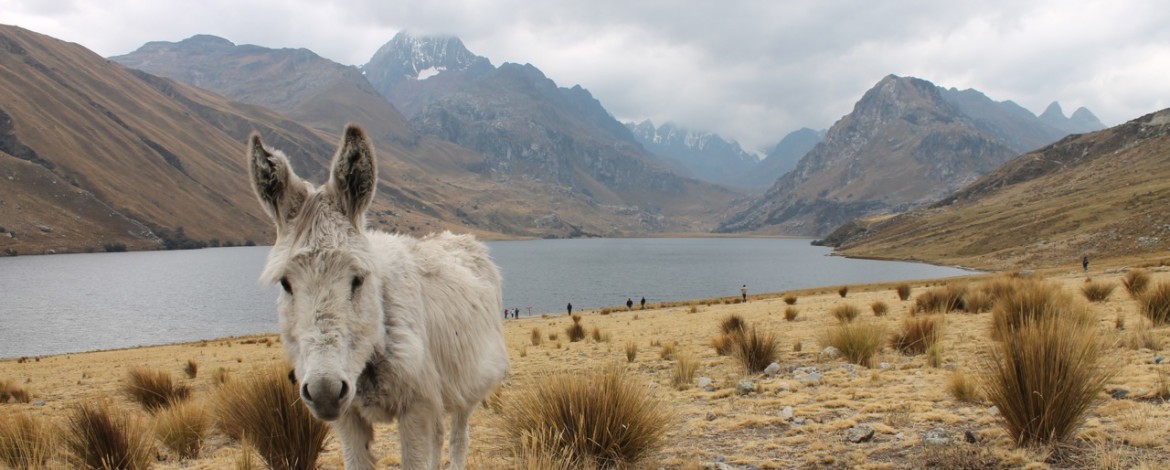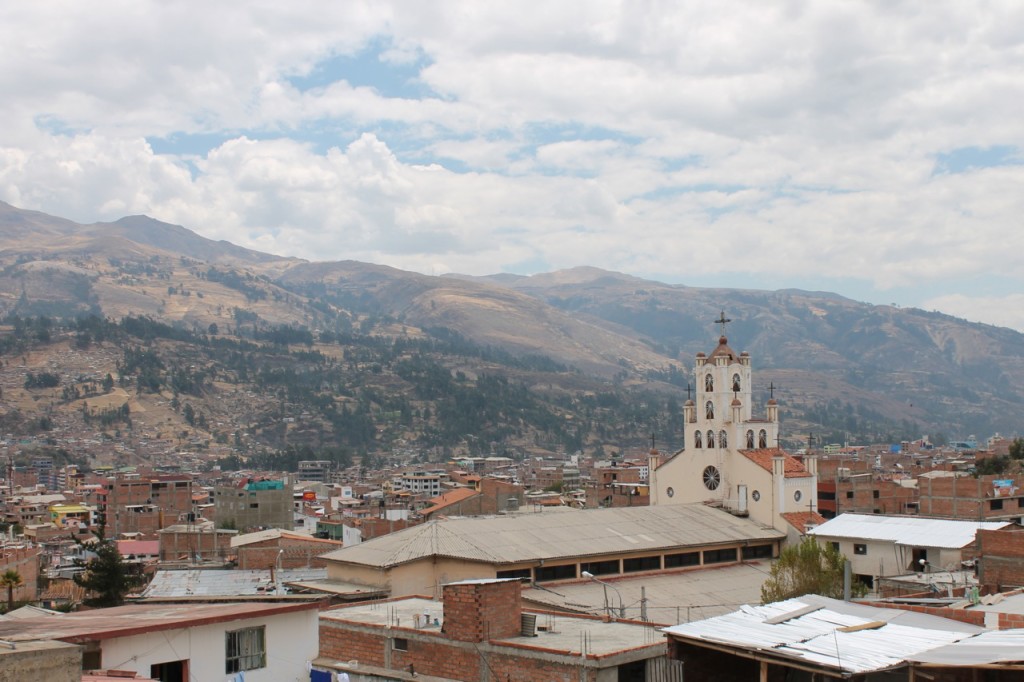Written September 2014.
On the edge of Huaraz a 6km dirt track climbs upwards towards Wilcahuain. A small collection of ruins dating to sometime between 600AD and 900AD. In an aid to acclimatising to the mountain heights of the region I head up their on a late Saturday afternoon. Huaraz is 3,100m above sea level. Much higher than I’ve ever slept before. And I find the walk further upwards dizzying. Light of head and body pulsing with an elevated heart beat. And too, the barks of dogs are unnerving. Grizzled creatures that prowl sections of the road in small packs. Probably harmless, but with odd growths and flea ridden, these are not like the domesticated cats of Kennedy Park in Miraflores, Lima. I wouldn’t want to pet them. And I have no idea if they bite.
I wave down a colectivo instead. These small mini-vans pack in local families and the rare tourist like myself. For 1.15 soles (or approx. 25p) the van stretches gears and jolts the clutch on the rise up. We pass village houses and farm land on route. Pigs, chickens, and the mad dogs that chase the colectivo. Every now and again we stop to the waved arm of a local. A kid in the back rapidly slows, open the door, drags in another pedestrian, and off we drive. We are also approaching a date for regional elections, and almost every wall is adorned with a spray paint slogan. Waldo appears to have the biggest army of graffiti artists. His one pledge for regional president simple in it’s artistry – if he’s elected, 500 soles (approx. £100) for every family.
The backdrop to these snapshots of local life are the mountain ranges of the Peruvian Andes. To the West is the Cordillera Negra range. Rocky peaks stretch to 5,500m, but lack snowfall. This contrasts with the higher white caped peaks of the Cordillera Blanca to the East. A trekkers paradise that I more than once have heard colloquially refereed to as the most beautiful mountain range in the world. Valleys and prairies in the sky, acting as the foundation for mountains such as Pisco (liked by backpackers for the absence of pre-requisite technical climbing ability – providing you can wield an ice-pick at 5,700m) and Alpaymo (famed above others for it’s beauty).
But as a side note, the beauty disguises the sad history of the place. An earthquake of magnitude 7.9 devastated the area in 1970, and in ways the residents of developed seismic prone regions such as San Francisco and Tokyo can probably barely imagine. In the avalanches and collapse around half the population of Huaraz perished. And a resulting landslide in the nearby town of Yungay caused even greater calamity. A torrent of glacial ice and rock buried the town of 20,000. Placing into an immediate grave all put a handful of the town’s residents.
Outside the ruins I jump out the van. It’s on the move again in a mere split second. Up here, there is the sound of the drums and trumpets that echo beautifully off the stone walls and small one story houses. The mountain slopes glowing in tandem in the setting sun. At the entrance to a church yard – the cemetery gates – a crowd are gathered. Young to old. With the music playing: dancing, drinking, jubilant chatter and cheers. I’m slightly further up the hill, wandering Wilcahuain. I’m told the name means Grandma’s house in Quecha. The ruin turns out to be little to look at. Essentially, just a small stone temple I pay 5 soles to see. Free of any trinkets your actual Grandma might have. Just musty old stone walls remain. There’s a cafe in this small complex that’s looking long shut. I’m not sure at all of the history of the place. Even in Spanish there’s scant writing to translate. And besides, with a mind suffering from mild oxygen withdrawal, I doubt I could decipher much. Here at 3,500m deep breaths coincide with baby steps.
When I’ve taken my exit the cemetery gate crowd is on the move. In a Peruvian tradition I’m enjoying it’s become a procession. Drums beating. Trumpets playing. Cheers and laughter as their footsteps dance, approaching my direction. I have my camera in hand to take a few photos. A casual observer. Although, they’re having none of this. Cheers and smiles as I’m enveloped by their crowd. My simple greetings of hola and como estas returned with offers of dance. I’d gladly comply. Place my camera carefully into my backpack, follow their steps. It’s just that this requires to much patience for the frenzied elderly women of Peru. A blonde gringo in their jubilant mists, I’m physically manhandled. Gripped by vice like hands (loads carried day after to day on stooped backs leads to quite some strength), I’m pulled into the fray. One woman with hold of my left arm, another with hold of my right. Stretched uncomfortably, possessively. Another woman, eyes locked onto my body, makes odd tsh tsh noises as she moves. Spittle flying out of her moth each time. Multiple photos of me in grips and motion are taken by one chap. How might I be labelled on Peruvian Facebook?
It’s too much for me on this day, and at these heights. With a struggle and a smile I eventually pull myself from the crowd. Handshakes and wet kisses upon my cheek as I make my escape. At the back of the procession, men more casual with bottles of beer. Hola. Una fiesta. Cerveza. Que buenas noches. One offers me a sip. It’s happens to be my first in close to a week, and it tastes great. It’s a strange kind of vacation when I neglect the stuff. But stumbling slowly even further back. A father, supported by mother and son. Head slumped forward in drunkenness as he’s dragged home. There are some things that transcend every culture.

